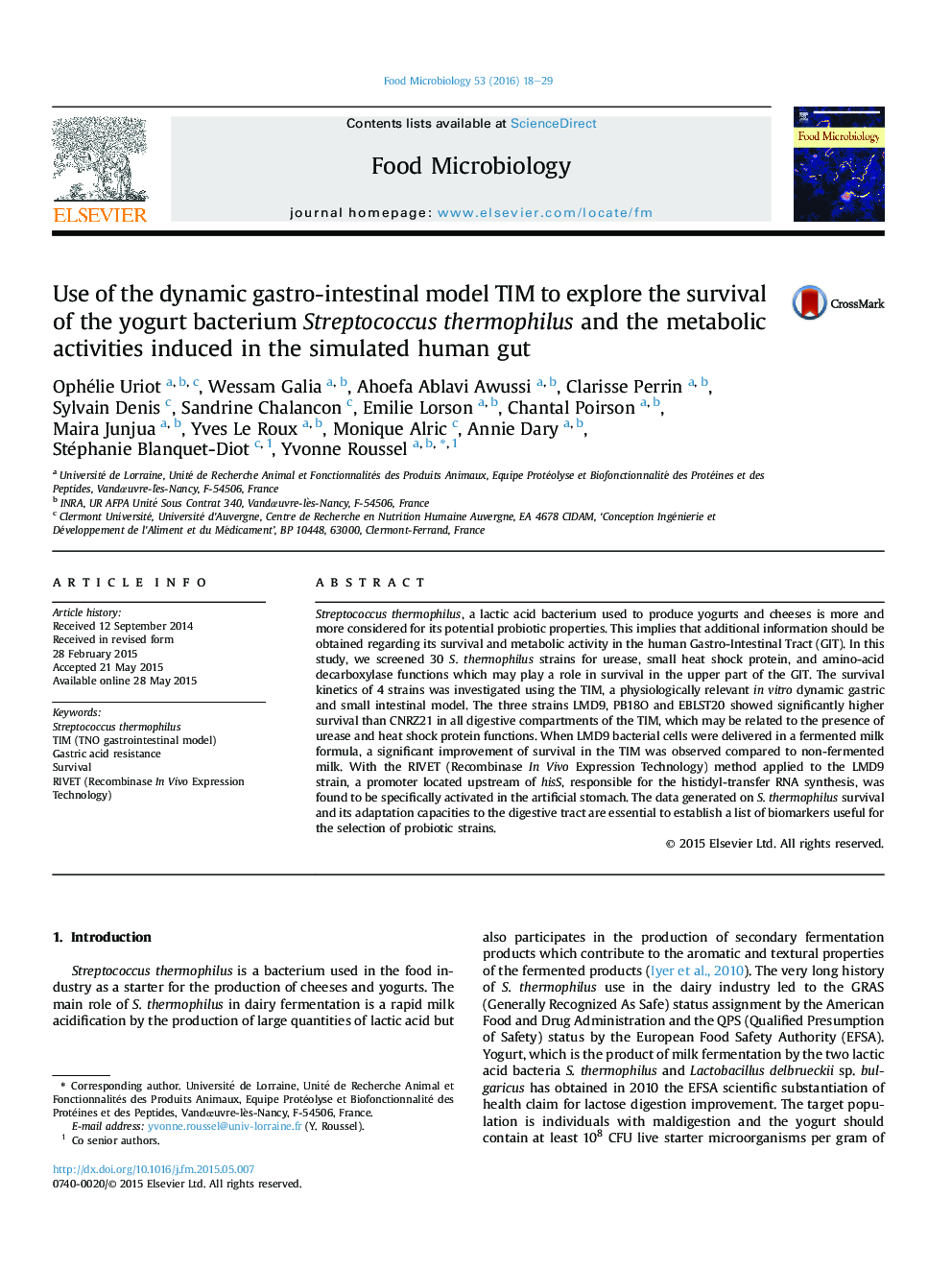| Article ID | Journal | Published Year | Pages | File Type |
|---|---|---|---|---|
| 4362694 | Food Microbiology | 2016 | 12 Pages |
•We screened 30 Streptococcus thermophilus for functions important for GIT survival.•Viability of 4 strains was investigated in the TIM-1, an in vitro human GIT model.•We detected 2 bacterial functions induced in the stomach with the R-IVET technology.
Streptococcus thermophilus, a lactic acid bacterium used to produce yogurts and cheeses is more and more considered for its potential probiotic properties. This implies that additional information should be obtained regarding its survival and metabolic activity in the human Gastro-Intestinal Tract (GIT). In this study, we screened 30 S. thermophilus strains for urease, small heat shock protein, and amino-acid decarboxylase functions which may play a role in survival in the upper part of the GIT. The survival kinetics of 4 strains was investigated using the TIM, a physiologically relevant in vitro dynamic gastric and small intestinal model. The three strains LMD9, PB18O and EBLST20 showed significantly higher survival than CNRZ21 in all digestive compartments of the TIM, which may be related to the presence of urease and heat shock protein functions. When LMD9 bacterial cells were delivered in a fermented milk formula, a significant improvement of survival in the TIM was observed compared to non-fermented milk. With the RIVET (Recombinase In Vivo Expression Technology) method applied to the LMD9 strain, a promoter located upstream of hisS, responsible for the histidyl-transfer RNA synthesis, was found to be specifically activated in the artificial stomach. The data generated on S. thermophilus survival and its adaptation capacities to the digestive tract are essential to establish a list of biomarkers useful for the selection of probiotic strains.
